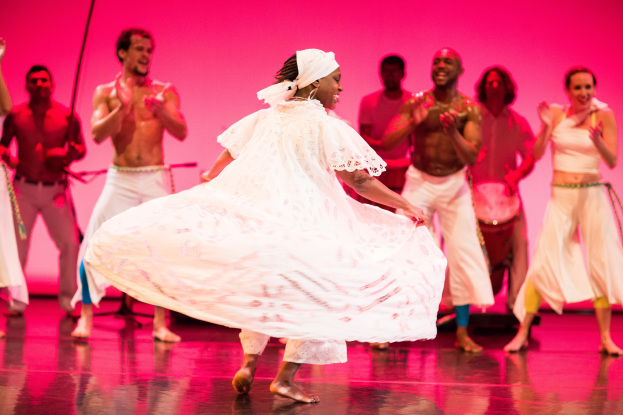
Consider your response, if someone said the following: “Here are the keys to the space, use it however you want. And, here’s a check with which to do whatever you want.” My guess is that you might say, with a matchless smile, something like, “Right on! Please give me those keys and that check.” That certainly would be my response, as well as jumping for joy. Artists in need of resources await such conversations generously proffering the freedom to continue creative endeavors—and, sadly, some artists never hear those words.
But we are fortunate because those very words of tangible encouragement can be attributed to a local curator and visionary thinker, Dena Beard, who has recently helped reinvigorate a multi-use space called The Lab, in San Francisco’s Mission District. Robert Avila interviewed Dena for this month’s issue and their conversation chronicles some of The Lab’s storied history of supporting a variety of disciplines, now getting an advance given Dena’s clear-headed far-sightedness for how artists can be supported.
At what point does an act of conviction—creation or curation—provide results? There’s an inherent hopefulness that must come with any new imagining of a singular idea, placing some thing, tangible or not, where once there was a void. It’s crucial to have a slew of advocates to bolster those evolving visions. These concepts, often filled with unique movements, costumes, sounds, images, props, and other theatrical elements, need backing in any imaginable manner, which provides the potential for greater success.
Along with the aforementioned resources, artists can find creative inspiration for a work in another artists’ efforts; books, music, paintings, sculpture and architecture have all stimulated the minds of a choreographer with dreams of more than once was. Dance-makers have long found visual art and the spaces that showcase this medium a vibrant vehicle for choreographic investigation. Writer and critic Claudia Bauer spoke with four local artists, Christy Funsch, Peiling Kao, Lauren Simpson, and Jenny Stulberg about their explorative exchanges with visual art, and how this prompted new thinking of their approaches.
Cuba’s cultural doors are opening more, and this will assuredly impact access and understanding of the many dance forms shaped in a country known for a diversity built from Spanish, African, French, and Asian influences. For the past twelve years, Ramon Ramos Alayo has gathered artists to reflect on the many intersecting passions of those calling Cuba their home, or home of inspiration, to present the CubaCaribe Festival. Rita Felciano spoke to Alayo about this year’s festival that draws its theme on how Cuba has influenced the featured artists’ artistic practices.
As evidenced in the many articles and events within, openings can originate in many forms: the instigator that purposefully provokes questions to be answered; the benefactor that makes resources available; the limitless ideas that abound in the hearts and minds of the creator—yes, we are our own creative gods—setting up the two-way street that is an act of faith on all parts when it comes to ensuring that there will be creative accomplishments. The interchange is limitless, and at some point, each of us will be presented with the opportunity to figure out when, where, and how much to open the door.
Trust me, it feels mighty good to learn what’s behind the door once you’ve walked through it.
This article appeared in the April 2016 issue of In Dance.


